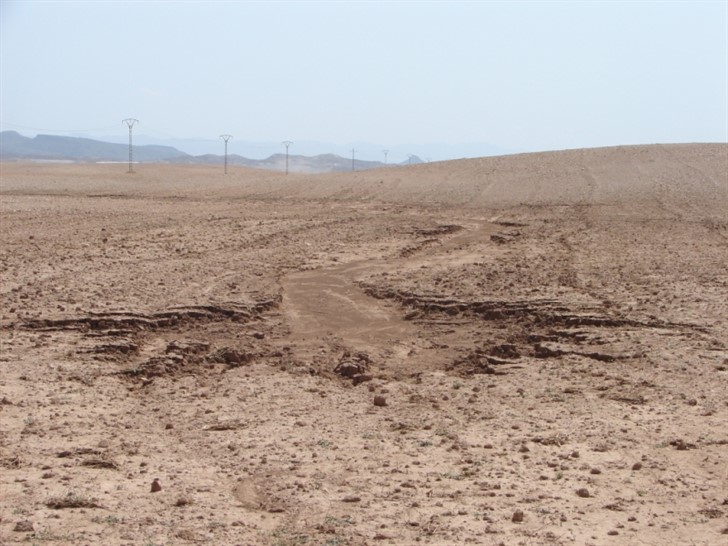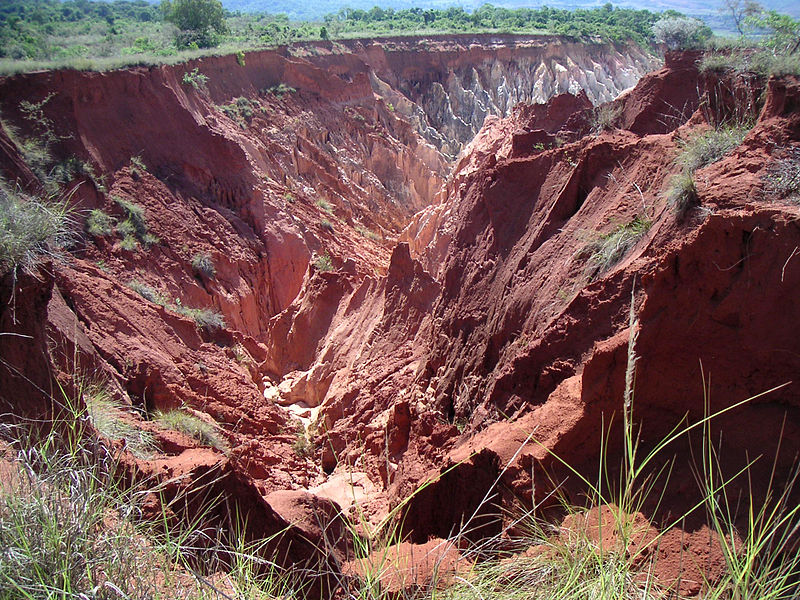Erosion is the process of soil or rock removal (stripping) from a surface. Erosion is often disputed with transportation which is the continuous movement of eroded material.
Transportation can integrate with erosion e.g sheetwash, rillwash etc or occur independently to move material considerable distances.
Transportation by wind can include saltation which involves rock bouncing on top of another, suspended load, creep (rolling of rocks) or by medium such as glaciers, rivers and or mass movements.
Erosion in deserts occurs as deflation which is the stripping away of fine particles from a desert surface and abrasion which is the sand blasting removal of rock particles.
Denudation
To denude means to lower. Denudation is the combined action of weathering, erosion and or transportation to lower the landscape and landforms. Material broken down by weathering is eroded and removed from the surface which lowers the surface.
Denudation rates are high in subtropical and arid regions were the absence of vegetation accelerates soil erosion and movement.
Rainy tropics have vegetation which usually binds soil together impeding soil movement which reduces denudation.
Areas with high vegetation cover and low temperatures (humid temperate) typically have reduced denudation rates since solution weathering is low and vegetation holds soil together.
Agents of Erosion
Two main natural agents of erosion can be recognised(water and wind)
Wind
The powerful force of wind is capable of removing material from a surface. In deserts it consist of sand fragments which are capable of blasting and scrapping away particles from a rock (abrasion).
Deflation by wind can cause large depressions called deflation hollows. Wind can transport particles a considerable distance before depositing them. For example, the Saharan sand can be transported as far as Britain causing red rains and brilliant sunsets.
Water
Water can erode material by processes such as sheetwash, rillwash, gullying or rainsplash. Attrition, abrasion, cavitation etc can erode a river’s load, bed or banks.
Other erosional agents
Animal action/ Bioturbation
Animals such as worms can burrow and create small voids in soils which make them susceptible and prone to movement. Large soil volumes can be eroded this way.
Ice
Ice can erode small amounts of material compared to water
Human Activity
Humans play a major role in causing erosion.
- Deforestation leaves the soil loose and prone to movement.
- Uprooting
- Over-cultivation and overgrazing
- over irrigation
- Mining
Types of erosion
Regardless of specific locations, they’re types of erosion that typically occur anywhere.
Sheetwash
Sheetwash is a type of unconcentrated overland flow occurring as a thin layer (sheet) of water collecting soil in the path. It is very effective in removing soil leaving and can leave smoothened surface.
Sheetwash favours bare surfaces as no vegetation can intercept or impede water flow. Soil is usually loose without vegetation making sheetwash very effective.

Rillwash
Sometimes water can be concentrated in tiny rivers called rills. These rills are created by the flowing water. The continuous flow of water may deepen and widen these rills forming hollow depressions called gullies.
Sometimes gullies can form by the subsurface collapse of land caused by voids (holes) left by throughflow. These voids can enlarge until there’s no support and collapse forming a gully.
Gullies are a type of land degradation and have a negative impact on agriculture. Gullies can be deep as 5m or can reach 100m.
 A deep gully in Madagascar caused by deforestation; source Frank Vassen, Wikimedia
A deep gully in Madagascar caused by deforestation; source Frank Vassen, WikimediaRainsplash
A single raindrop is capable of dislodging and moving soil particles. Rainsplash is effective on slopes where the net movement of soil is down slope.

